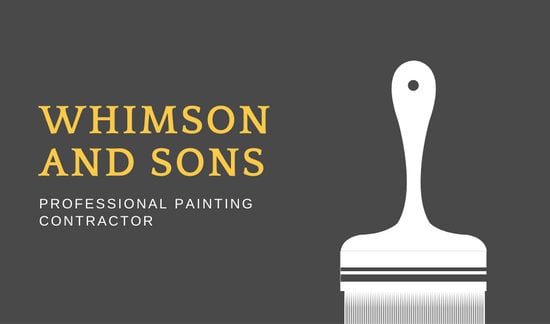The Duty Of Weather Fit Industrial Paint Practices
The Duty Of Weather Fit Industrial Paint Practices
Blog Article
Web Content By-Osborn Cox
When you're taking care of a commercial painting task, you can't ignore how weather plays a crucial function in your success. Variables like temperature level, humidity, and wind can either boost or threaten your initiatives, influencing everything from application quality to safety and security at work site. You may think you can paint anytime, however the reality is that specific problems can result in costly hold-ups or poor surfaces. Recognizing these aspects is key, but what details strategies can you apply to ensure optimal results amidst unforeseeable weather?
Temperature Level and Paint Application
When it involves business paint, temperature level plays a crucial duty in exactly how well the paint sticks and dries. If you're planning a task, keep an eye on the temperature range suggested by the paint producer. Preferably, you intend to function within that array for optimal results.
When temperatures are as well low, paint can become thick and tougher to use, resulting in unequal insurance coverage. You may find yourself battling with brush strokes or roller marks that simply won't go away.
On the other side, high temperatures can cause paint to dry as well rapidly. This can lead to problems like breaking or peeling, as the paint does not have adequate time to bond properly to the surface.
If it's too warm, take into consideration scheduling your help cooler parts of the day, such as morning or late afternoon.
Humidity and End Up Top Quality
Humidity dramatically impacts the finish top quality of business painting projects. When moisture degrees are high, dampness in the air can hinder the drying process of paint. This can lead to issues like inadequate bond, uneven finishes, and enhanced drying times.
You may find that your paint takes longer to heal, which can postpone your job timeline.
On the other hand, low humidity can likewise posture problems. If the air is too dry, paint can dry out as well promptly, preventing appropriate leveling and leading to a rough surface. You want your paint to move smoothly, and rapid drying can prevent that, leaving you with an unsatisfactory surface.
To achieve https://www.homesandgardens.com/interior-design/paint/how-to-paint-trim-with-carpet , aim for moisture degrees in between 40% and 70%. This array allows for ideal drying conditions, guaranteeing that the paint sticks well and levels out correctly.
Take into consideration using dehumidifiers or fans to regulate moisture in indoor projects, and attempt to prepare exterior jobs for days when humidity is within the ideal variety. By focusing on humidity, you can enhance the final appearance and toughness of your commercial paint work.
Wind and Outside Conditions
While you mightn't consider wind as a major element, it can substantially influence the result of outside industrial painting jobs. High winds can disrupt your application procedure, causing paint to dry as well promptly. When paint dries out too fast, it can lead to an irregular coating or visible brush strokes.
You'll likewise face challenges with paint overspray, as wind can lug bits far from the desired surface area, causing thrown away products and possible damage to bordering areas.
Moreover, https://sethvafkp.estate-blog.com/32465392/from-mundane-to-magnificent-revamp-your-space-with-appealing-colors can develop security threats on the job site. Ladders and scaffolding are a lot more at risk to tipping in windy conditions, placing your crew in danger. It's important to keep track of wind speeds prior to beginning a task. If winds go beyond safe restrictions, it's finest to delay your job to make certain a high quality finish and keep security.
On calmer days, you can take advantage of the ideal problems to achieve smooth, specialist outcomes. Constantly inspect the weather report and strategy accordingly.
Conclusion
To conclude, recognizing just how weather impacts industrial painting is vital for accomplishing the best outcomes. By monitoring temperature level, moisture, and wind problems, you can arrange your tasks during optimal times. This not just makes sure a smooth application yet also boosts the top quality of your surface. So, keep an eye on the projection and plan appropriately-- doing so will certainly save you time, cash, and irritation while delivering a specialist outcome every single time you paint.
